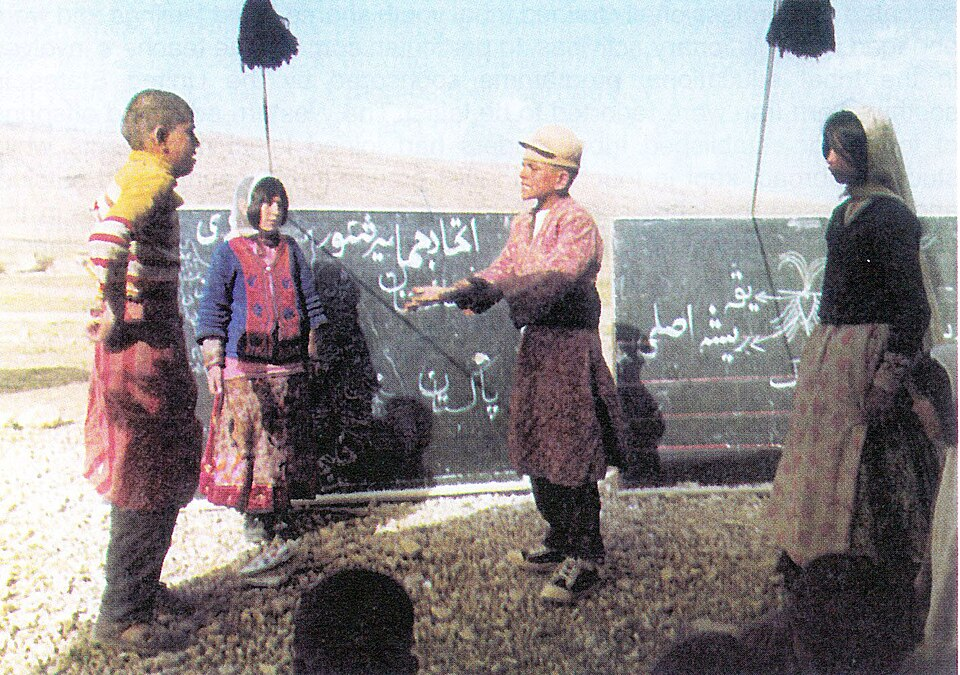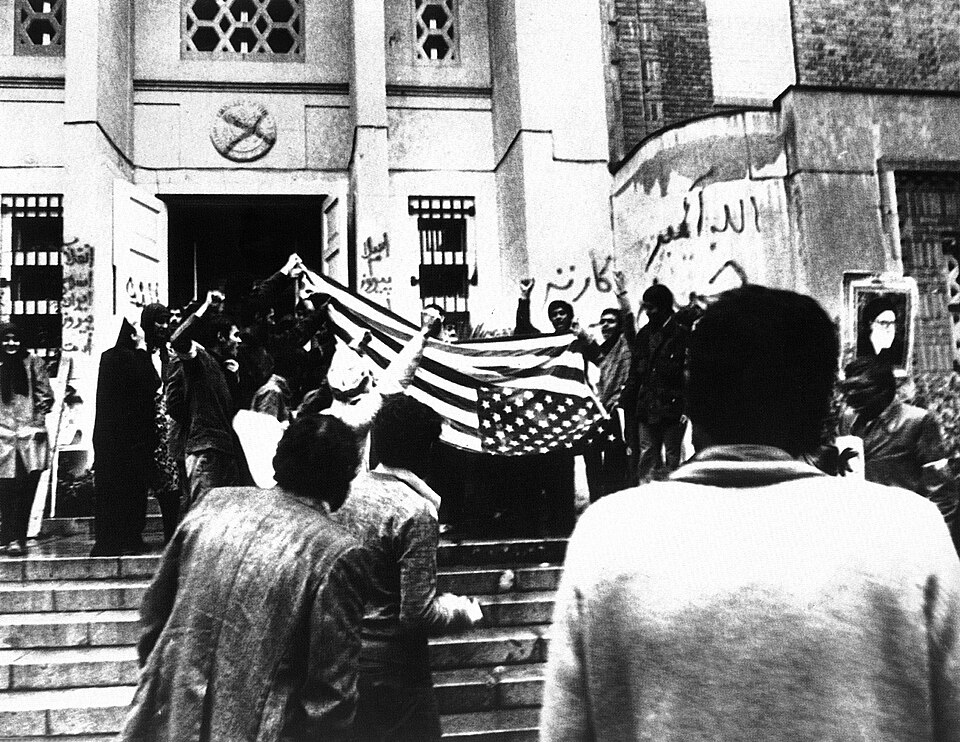IB Syllabus focus:
'Examine the modernization and westernization efforts in post-war Iran under Mohammad Reza Shah Pahlavi.
Analyze the influence of the West, the White Revolution, and the origins and effects of the 1979 Revolution.'
The period between 1945 and 1979 in Iran is marked by significant political, economic, and social changes under the leadership of Mohammad Reza Shah Pahlavi. These developments set the stage for the eventual overthrow of the monarchy and the establishment of an Islamic Republic.
Modernisation and Westernisation under Mohammad Reza Shah Pahlavi
After World War II, Iran embarked on a journey of transformation, aiming to modernise its society and economy, with substantial influence from Western nations.
Economic Policies and Industrial Development
Nationalisation of Oil: Following a brief period of nationalisation of the oil industry, which led to a British-led boycott and a subsequent economic crisis, the Shah established the Consortium Agreement of 1954 with Western oil companies.
Five-Year Development Plans: These plans aimed at economic diversification to reduce dependence on oil revenues and were funded substantially by oil income.
Industrial Expansion: The Shah promoted the growth of a consumer culture with the expansion of the domestic market for goods, paralleled by rapid urbanisation.
Social Reforms and the White Revolution
Women's Emancipation: The Shah granted women suffrage in 1963 and encouraged their participation in the workforce.
Education Reform: Literacy Corps were established to educate rural populations, and several universities were founded, following Western models.

Literacy Corps instructor teaching a mixed rural class in Fars Province, exemplifying the White Revolution’s drive to expand basic education beyond cities. The programme deployed thousands of conscripts to raise rural literacy and align schooling with state modernisation goals. Source
Cultural Westernisation
Secularisation: A concerted effort to reduce the role of Islam in governance through secular education and Western legal codes.
Lifestyle Changes: Promoted Western attire and liberalised social policies, drawing criticism from conservative sectors of society.
Influence of the West
Economic and Military Support
Military Build-up: Iran became one of the largest military powers in the region, heavily supported by American and British hardware and training.
Economic Aid: The USA provided Iran with substantial economic aid, which helped finance industrial and infrastructural projects.
Western Cultural Impact
Education: Western educational systems and textbooks became the norm in Iranian schools, universities, and military training programs.
Media: Western films, music, and television programs became widely available, influencing Iranian popular culture.
The White Revolution (1963)
Aims of the White Revolution
Land Reform: A core aim was to break up the feudal agriculture system, distributing land to actual tillers and thus eliminating the power of landlords.
Modernisation: The White Revolution aimed at a total overhaul of the economy to a mixed model, state capitalism with private enterprise.
Reactions to the White Revolution
Support from the Peasantry: Land distribution was generally popular among peasants but was often not implemented effectively.
Opposition from the Clergy: The Shia clergy saw the reforms as a threat to their traditional power and led opposition movements.
Origins and Effects of the 1979 Revolution
Rising Discontent
Economic Instability: The rapid modernisation led to uneven economic growth, creating a gap between the wealthy and the poor.
Political Oppression: The Shah's government became increasingly autocratic, dissolving political parties and restricting press freedoms.
Growth of Opposition
Intellectuals and Students: Western-educated intellectuals and students became increasingly critical of the Shah’s regime and its policies.
Religious Opposition: The most vehement opposition came from religious leaders, including Ayatollah Ruhollah Khomeini, who decried the loss of traditional Islamic values.
The Revolution
Coalition of Forces: A diverse coalition, including leftists, liberals, and religious groups, came together to oppose the Shah.
Demonstrations and Strikes: By 1978, strikes and demonstrations paralysed the country, with massive public gatherings demanding the Shah’s departure.
Aftermath of the Revolution
Establishment of an Islamic Republic: In April 1979, Iran was declared an Islamic Republic following a national referendum.
Purge of the Old Regime: The new regime systematically dismantled the Pahlavi state apparatus, purging the civil service, military, and judiciary.
International Consequences
Hostage Crisis: The US Embassy in Tehran was stormed in November 1979, and 52 Americans were held hostage for 444 days.

Students scale the walls of the U.S. Embassy compound in Tehran on 4 November 1979, initiating the 444-day hostage crisis that reshaped Iran–U.S. relations. This photograph visualises the transition from revolution to an international standoff. Source
Sanctions and Isolation: In response to the hostage crisis, the USA imposed sanctions, which were later followed by other nations.
Domestic Changes
Societal Restructuring: The new government implemented policies based on Islamic principles, reversing many of the Shah’s reforms.
Cultural Revolution: Universities were Islamised, Western books were banned, and a campaign to promote Islamic values was initiated.
Conclusion
The period from 1945 to 1979 was a time of profound transformation for Iran, marked by rapid modernisation and westernisation efforts under the rule of Mohammad Reza Shah Pahlavi. These changes, however, also sparked deep-seated societal tensions and discontent, leading to the revolutionary events of 1979. The effects of this era have had lasting impacts on Iran's domestic and international relations and continue to shape its role in the world today.
FAQ
The Shah's regime vigorously employed propaganda to promote the White Revolution, utilising media, education, and public events to cast the reforms in a positive light. The government heralded the reforms as essential progress towards modernisation and improved living standards. State propaganda emphasised the Shah's alignment with Western progress and downplayed any cultural or religious implications that might cause domestic unrest. However, the impact was polarising; while some segments of the population, particularly the urban middle class and younger Iranians, were swayed, others, particularly in rural areas and within the religious establishment, became increasingly sceptical and resistant to the Shah’s agenda.
The Shah's land reform policies, part of the White Revolution, aimed to redistribute land from large landowners to peasants. However, these policies often failed due to poor implementation and corruption. Many peasants lacked the necessary skills, resources, and support to make their new land holdings productive, leading to decreased agricultural output. Additionally, the reform dispossessed many landowners without providing adequate compensation or alternatives, which created a class of disaffected elites who would later oppose the Shah. The disruption of rural economies also accelerated urban migration, leading to overcrowding in cities and the growth of slums, which became hotbeds of dissent against the Shah.
Foreign-educated Iranians, who had been exposed to a variety of political ideologies and freedoms abroad, played a significant role in the opposition to the Shah. Upon returning to Iran, many were disillusioned by the lack of political freedom and the repression under the SAVAK, the Shah’s secret police. They brought with them liberal, nationalist, and sometimes leftist ideologies that challenged the Shah’s autocratic and Western-leaning rule. Their education allowed them to articulate dissent and organise politically, contributing significantly to the intellectual and ideological underpinnings of the revolutionary movement. Their influence was instrumental in shaping the rhetoric of revolution and mobilising segments of the population against the Shah.
Despite the oil boom of the 1970s, which massively increased Iran's state revenues, economic instability persisted due to several factors. The rapid inflow of wealth led to high inflation, which eroded the purchasing power of the middle and lower classes. Additionally, the Shah's ambitious industrial projects often resulted in "white elephant" ventures, which did not yield the expected return on investment. There was also a heavy reliance on Western imports for consumer goods and technology, leading to a trade imbalance. Moreover, corruption and mismanagement within the government and royal circle meant that oil revenues were not always invested wisely, leading to economic disparities that contributed to social unrest.
During the Cold War, Iran was of strategic importance, and its policies were significantly influenced by the geopolitical struggle between the USA and the USSR. Mohammad Reza Shah, with strong American backing, embraced Westernisation and modernisation as a bulwark against Soviet influence. This alliance resulted in considerable military and economic aid to Iran, which bolstered the Shah’s power but also engendered dependency. The Shah’s commitment to a pro-Western stance was seen in his policies, such as the rapid industrialisation funded by oil revenue and Western investments, which aligned with American interests in preventing communist influence in the region.
Practice Questions
The White Revolution, initiated by Mohammad Reza Shah, had mixed outcomes. Its success in modernising Iran is evident through industrial growth and infrastructure development. Women’s rights advanced with the introduction of suffrage and a broader presence in the workforce. However, the aim of westernising Iran provoked widespread dissent, particularly among traditionalists and the clergy, who felt alienated by the secular shift. Land reforms, a central element, often failed to benefit the intended peasant class, rather empowering new elites. Thus, while the White Revolution spurred some modernisation, its westernisation efforts were met with significant resistance and ultimately contributed to the Shah's downfall.
Post-war socio-economic changes in Iran, notably the uneven benefits from oil wealth and rapid modernisation, created stark inequalities and social discontent. While the Shah’s reforms aimed at economic and social modernisation, they led to urban-rural divides, with the peasantry largely excluded from oil revenue benefits. Moreover, the rapid pace of Westernisation and secularisation alienated conservative sectors, especially the clergy, who lost their traditional influence. The exclusion of political participation and the oppressive tactics of SAVAK further exacerbated tensions. These factors collectively created an environment ripe for revolution, culminating in the disparate opposition uniting to overthrow the Shah in 1979.

